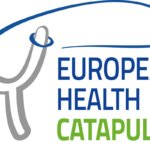The European Union has made the eHealth as an issue of important priority. EU has extended its support to the member states for the development of eHealth services that also enable the cross-border exchange of ePrescriptions, telemedicine, and telemonitoring solutions. ASSESS CT is working tirelessly to develop SNOMED CT as the standard clinical terminology. eHealth Network is also developing guidelines and National Contact Points for health data exchange among the member states.
ASSESS CT – assessing SNOMED CT for large scale eHealth deployments in the EU
There is a growing need for exchanging health data among different countries, and experts have felt the need for common semantics, terminology, and standards.
ASSESS CT contributed to better semantic interoperability of eHealth services in Europe, to optimize care and to minimize harm in the delivery of attention. The ASSESS CT project, integrating a broad range of stakeholders, investigated the fitness of the international clinical terminology SNOMED CT as a potential standard for EU-wide eHealth deployments.
SNOMED CT is going to be the standard language for use in Certified EHR Technology, and the code set is used to facilitate data exchange across disparate systems, the coalition notes. The system allows clinicians to document clinical findings, provider interventions, patient histories, and other elements critical to delivering informed care.
ASSESS CT has an extensive list of objectives to be fulfilled which includes, investigation the use of SCT and studying its fitness as a clinical terminology. It is also assessing if SCT satisfies the requirements of EU standardization regulations.
Based on the findings and observations of ASSESS CT, they presented a strategic paper to the European Union in which they made five major recommendations. The first one being, development of wider, coherent, and priority driven strategy for optimizing benefits of semantic interoperability. They recommended SNOMED CT as the best candidate for core reference terminology for cross-border interoperability in eHealth projects. Other recommendations included accepting SCT as part of national language infrastructure, incremental deployment of SCT, and mechanisms to facilitate cross-border collaborations on eHealth projects.
| Recommended for you | |
| Interoperability in digital health sector | |
| Regulatory and policy framework for medical devices in India | |
| Fast Healthcare Interoperable Resources(FHIR) |
Emergency data management in Germany
Emergency data management has been included in the eHealth regulations in Germany. The data is stored in electronic health card of the patient and is available to the health care providers in case of an emergency. The first version launched in 2008, offered many challenges like insufficient data transfer from PAS, rigid data structure and new doctors.
Emergency data about a patient is required in pre-clinical treatment by emergency medical services and in unplanned in-patient or out-patient treatment in hospitals. 12.6 Million Emergency cases are handled by mobile services every year. So, the data is also needed in emergency services by ambulances.
Relevant emergency data contains all information regarding patient history that needs to be immediately made available to doctor to prevent any unfavorable course of a disease. The data should have the previous diagnosis, medications, allergies or intolerances towards external stimulus, patient’s contact information, additional medical information on behalf of the patient to replace the blood group and personal declaration of the patient like organ donor consent.
Feasibility studies have shown that clinicians, emergency physicians, and paramedics rate the emergency data being developed as highly useful. The success of the dataset will rely upon the quality, implementation, and usage of the data by all the stakeholders.
eHealth network advances cross-border healthcare and health data exchange
eHealth Network adopted guidelines for National Contact Points and a governance model to be used for sharing health data across borders. The Network also recommends EU countries to use tools and directives developed by the EU-funded PARENT project for interoperable health registries. National contact points connect member states to the EU eHealth network.
JAseHN is a joint action mechanism that is led by the Member States (MS) and co-financed by the European Commission (EC). The principal objective of this Project is to act as the main preparatory body for the eHealth Network. Connecting Europe Facility (CEF) Telecom program is an initiative to develop eHealth Digital Service Infrastructure for the cross-border exchange of information such as patient summaries and ePrescriptions. CEF, a project spread over four years, has got an allocated budget of over 15 Million Euros.
epSOS aimed to design, build and evaluate a service infrastructure that demonstrates cross-border interoperability between electronic health record systems in Europe. Starting guidelines of eHealth Network has been taken from the lessons learned from project epSOS, and JAseHN is the organization that overlooks all this work of preparing guidelines.
With the advent of digital technology and more number of countries in Europe shifting their priorities towards digital health care, a secure, standard method for exchanging data among member states is needed. Electronic data does not flow freely between most of the EU countries due to different barriers like lack of awareness, lack of trust and lack of legal clarity. A standard approach across all the EU countries will be needed to establish EU as the frontrunner in eHealth which will contribute to the wellbeing and health of its citizens.
| Projects to facilitate cross-border exchange of data in EU | Challenges in exchanging data across member states |
|---|---|
| ASSESS-CT, eHealth Network, epSOS | Lack of awareness, Untrained doctors, Lack of trust, Lack of legal clarity and guidelines. |
Moderator: Dr. Stephan Schug, CMO EHTEL, and JAseHN WP4 Stakeholder Secretariat
Speakers:
Prof. Dr. Sylvia Thun, Director Competence Center eHealth, HochschuleNiederrhein
Dr. Philipp Stachwitz, Gematik, Berlin, Germany
Dr. Stephan Schug, CMO EHTEL, and JAseHN WP4 Stakeholder Secretariat
Video URL: https://www.youtube.com/watch?v=oGsvcKiz708&index=35&list=PL98iSagl_rnIwKONL-dQmj9Y1mOGAjvW8
Upload Date: 28th November 2016
Video code: 16G2042
Source:
ASSESS-CT: http://assess-ct.eu/start0.html
eHealth Network: https://ec.europa.eu/health/ehealth/policy/network_en
JAseHN: http://jasehn.eu/
Connecting Europe Facility(CEF): https://ec.europa.eu/inea/en/connecting-europe-facility
epSOS: http://www.epsos.eu/
Image credit: www.istockphoto.com

















